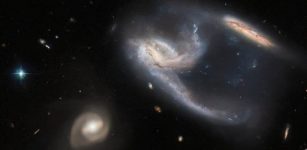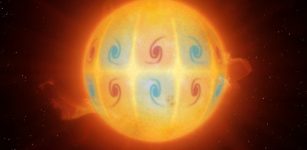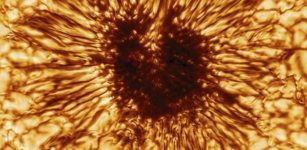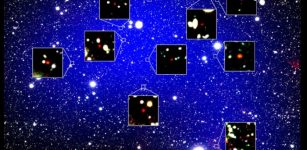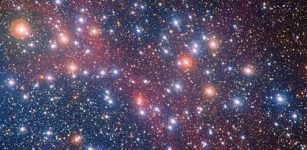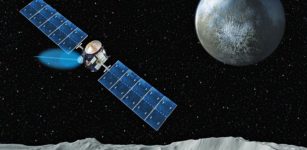Spectacular Ancient Burst Of Star Formation In Milky Way Imaged By ESO’s VLT
Eddie Gonzales Jr. – MessageToEagle.com – Using ESO’s Very Large Telescope (VLT), astronomers have uncovered evidence for a dramatic event in the life of the Milky Way: a burst of star formation so intense that it resulted in over a hundred thousand supernova explosions.
 The central Milky Way as imaged by the Very Large Telescope and the HAWK-I infrared camera. Image: ESO/Nogueras-Lara et al.
The central Milky Way as imaged by the Very Large Telescope and the HAWK-I infrared camera. Image: ESO/Nogueras-Lara et al.
“Our unprecedented survey of a large part of the Galactic center has given us detailed insights into the formation process of stars in this region of the Milky Way,” said Rainer Schödel from the Institute of Astrophysics of Andalusia in Granada, Spain, who led the observations.
“Contrary to what had been accepted up to now, we found that the formation of stars has not been continuous,” Francisco Nogueras-Lara, who led two new studies of the Milky Way central region while at the same institute in Granada, said in a press release.
Researchers found that about 80% of the stars in the Milky Way central region formed in the earliest years of our galaxy, between eight and 13.5 billion years ago. This period of star formation was followed by about six billion years during which very few stars were born.
This was brought to an end by an intense burst of star formation around one billion years ago when, over a period of less than 100 million years, stars with a combined mass possibly as high as a few tens of million Suns formed in this central region.
 The VLT/HAWK-I image of the Milky Way’s heart includes the Nuclear Star Cluster (NCS) at center of the galactic core and the Arches Cluster, the densest cluster in the galaxy. Image: ESO/Nogueras-Lara et al.
The VLT/HAWK-I image of the Milky Way’s heart includes the Nuclear Star Cluster (NCS) at center of the galactic core and the Arches Cluster, the densest cluster in the galaxy. Image: ESO/Nogueras-Lara et al.
“The conditions in the studied region during this burst of activity must have resembled those in ‘starburst’ galaxies, which form stars at rates of more than 100 solar masses per year,” says Nogueras-Lara, now based at the Max Planck Institute for Astronomy in Heidelberg, Germany.
At present, the whole Milky Way is forming stars at a rate of about one or two solar masses per year.
“This burst of activity, which must have resulted in the explosion of more than a hundred thousand supernovae, was probably one of the most energetic events in the whole history of the Milky Way,” Nogueras-Lara added.
During a starburst, many massive stars are created; since they have shorter lifespans than lower-mass stars, they reach the end of their lives much faster, dying in violent supernova explosions.
The study is published in Astronomy & Astrophysics.

